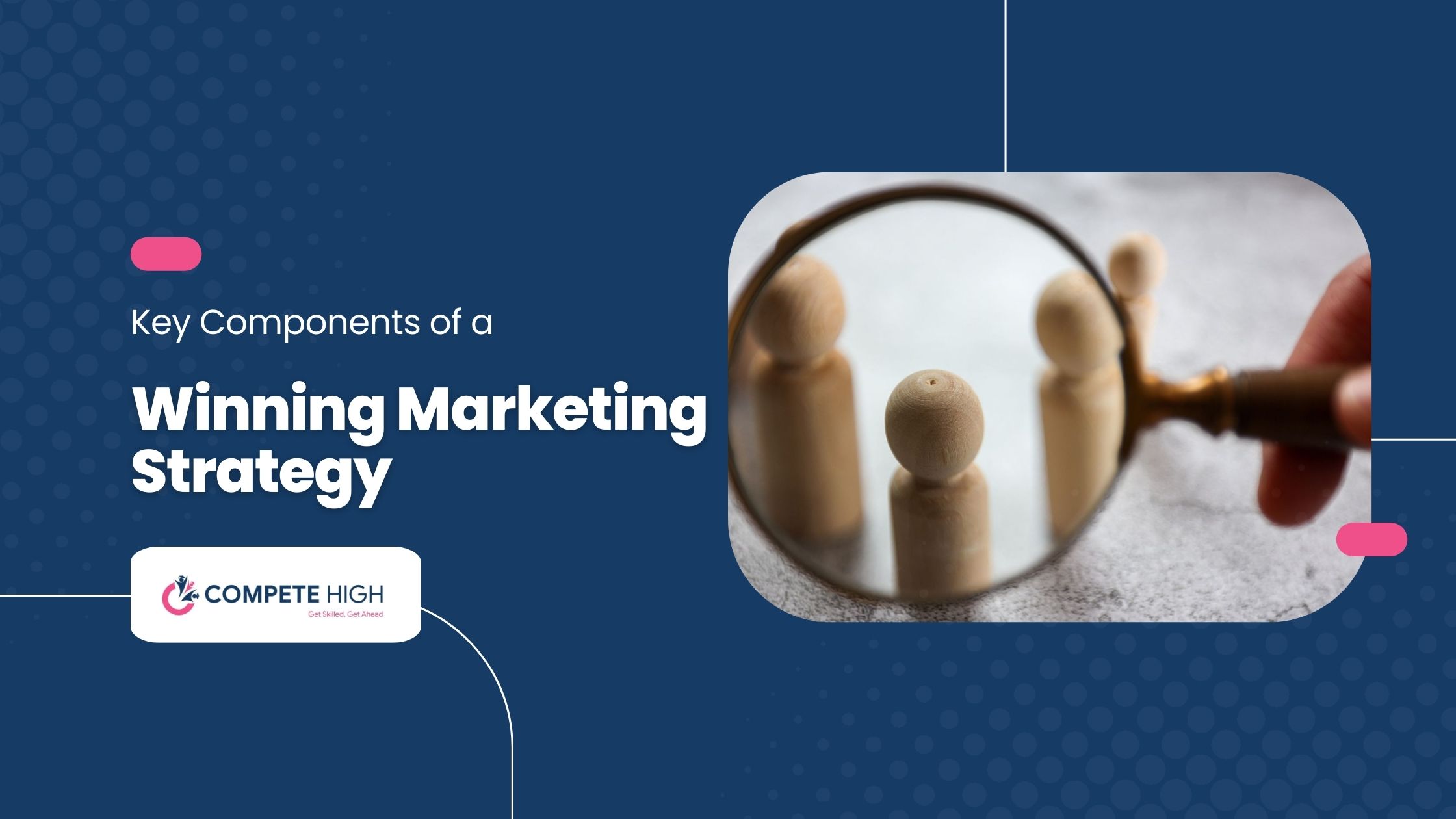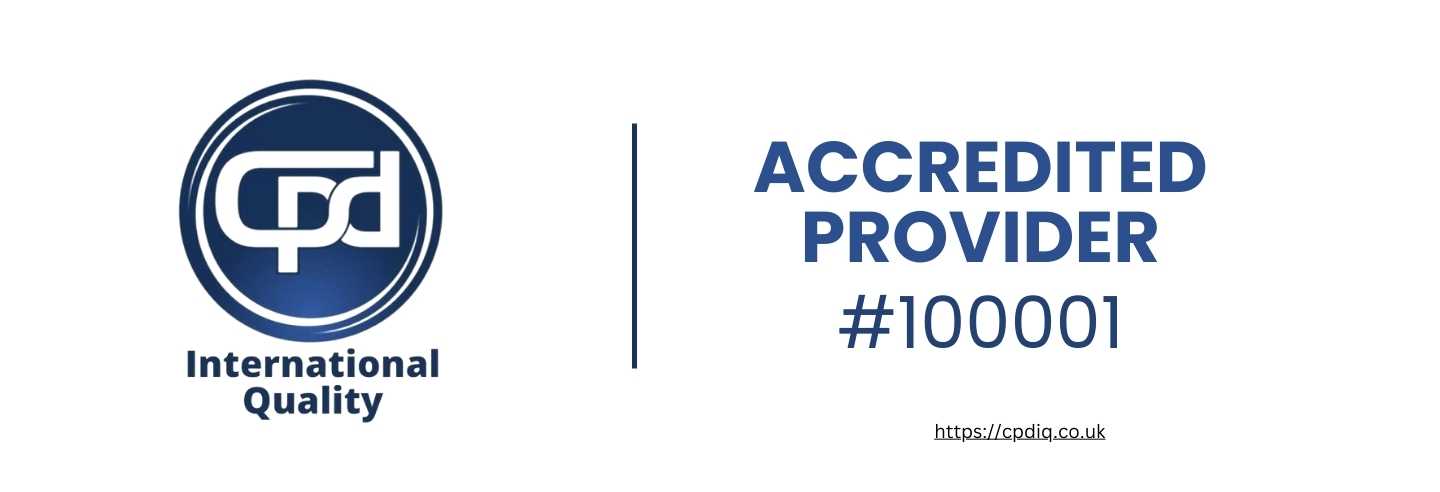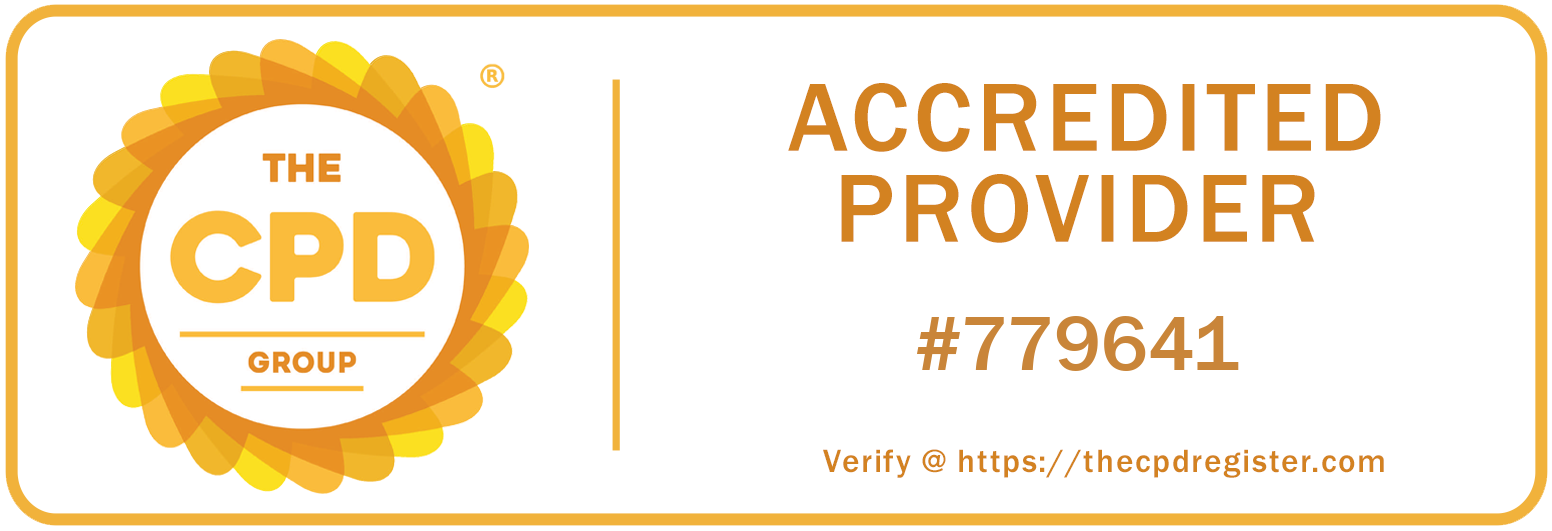
A winning marketing strategy is a must-have if your business wants to achieve business success, especially in this highly dynamic marketplace. It gives a direction to drive your business goals, whether it is to gain visibility, increase your customer base, or make sales. The essence of a winning marketing strategy lies in the elements that go into its creation. These include identifying your target audience, defining your goals, and selecting the appropriate marketing mix. This blog will highlight the crucial components that go into developing a winning marketing strategy.
Defining Your Target Audience
Understanding Your Ideal Customer
Knowing who your target audience is and why is the fundamental principle of any successful winning marketing strategy. By identifying your ideal customer, you gain crucial insights into what they want from your product or service and how to create marketing messages that resonate with them. Furthermore, by understanding who your target audience is and why they’re interested in your product, you can tailor your offerings to meet their needs and preferences, making your marketing more effective and efficient. Without knowing who your target audience is and why they’d be interested in buying from you, your marketing is probably not going to hit the mark.
In order to define your ideal customer, you need to start by collecting demographic data: age, gender, income level, education, geographic location, and so on. This gives you a general sense of who your customers are and where they’re located. However, demographics are not enough. You will also need to collect psychographic data that helps paint a picture of who your customers are on a more meaningful level. Psychographics reveal your customers’ values, interests, lifestyles, motivations, and even what they fear. It can help you understand why they purchase certain products or services and what would cause them to purchase from you instead of your competitors.
And then there is behavioural data—data on how customers use your brand. This includes things such as purchase history with the brand, purchase and product preferences, and how customers engage with different channels of marketing. Using behavioural data, you can discern patterns and trends that can inform your marketing roadmap, such as which products are most popular in specific customer segments or at what time of year your customers are most likely to buy.
You can gather this information through surveys, interviews, social media analytics, web tracking software, and the like. Once you have the data, you can use it to create a detailed profile of the ideal customer, which you can then use to create your winning marketing strategy.
Creating Buyer Personas
Creating buyer personas helps make your target audience feel a bit more real, so you can better ensure that your marketing messages and marketing strategies are properly personalised and ‘on target’. So, what is a buyer persona, and how can you create one? A buyer persona is a semi-fictional representation of your ideal customer based on real data and information gathered from real members of your target audience. By creating detailed buyer personas, you will be able to more clearly define the needs, wants, motivations, and behaviours of different segments within your audience.
To start defining a buyer persona, revisit the demographic, psychographic, and behavioural data that you have been collecting. Look for common characteristics and patterns among your customers, and try to create a persona that embodies a specific segment of your audience. Each persona you create should have a name, age, occupation, and other demographic details. They might also have interests, challenges, and goals. For instance, if you are looking to sell project management apps to startups, you could create a persona called ‘Marketing Mary’, a 35-year-old marketing manager who cares about being efficient and constantly seeks tools to help her do her work better.
Your personas should also include information on the customer journey: what is the typical path that this persona takes when interacting with your brand, from first becoming aware of you to making a purchase decision and beyond? What is their pain? What content would resonate with them? What are their preferred communication channels? The more you know about each persona, the more you can tailor your strategies and messaging to resonate with them.
Keep in mind that most businesses will have a number of buyer personas, each representing a different target segment. A B2B software company may have a persona for owners of small businesses, another for IT managers at large enterprises, and another for CIOs at large companies. Developing multiple personas enables you to cater to the peculiarities of each segment and, therefore, heightens your chances of engagement and conversion.
Once you have your buyer personas, you should share them with your entire marketing organisation and use them to help guide the development of your marketing efforts. Each time you start a new marketing campaign, you should consider how your personas will respond. Do they provide the information your personas seek, or do they state your product benefits without addressing your personas’ needs?
Setting Clear Marketing Goals and Objectives
Importance of SMART Goals
Having clear and actionable goals is vital to both directing your winning marketing strategy and measuring your success. A SMART goal is specific, measurable, achievable, relevant, and time-bound. It helps you gain a clear understanding of what you expect from your marketing efforts, making sure that your goals are both realistic and effective.
With specific goals, you know exactly what you’re trying to accomplish; if you want to increase brand awareness, for instance, your goal could be to increase brand awareness among millennial consumers by 20 percent using social media campaigns within the next six months.
Measurable goals have criteria for tracking progress and proving success. The goal above is measurable because it provides a specific increase (20%) and a time frame (six months). Measurable goals allow you to track your progress over time and evaluate your winning marketing strategy based on measurable data. Some common metrics for proving the success of your marketing goals include website traffic, conversion rates, and social media engagement.
Achievable goals are realistic and attainable, given your current resources and limitations. Aspirational goals are typically high, but they need to be attainable to keep you and your team on track. For instance, if you and your team set a ridiculous goal that is unattainable, you’re setting yourselves up for frustration and demotivation. On the flip side, if you and your team set a goal that is too easy, you’re not pushing yourselves to perform at your best. Situate yourself in your current environment, taking into consideration your budget, your team’s bandwidth, and your current market conditions, in order to set an appropriate, achievable, yet challenging goal.
Relevant goals are closely linked to your business objectives and are important to your organisation. Every marketing goal you set should map directly to your business objective. For example, suppose your company’s key objective is to enter a new market. In that case, your marketing goals should address your market entry strategy (e.g., market penetration, brand positioning, and customer acquisition in that new market).
Lastly, time-bound goals should have a clear deadline or timeframe. Setting a time limit for your team can bring a sense of urgency to achieving your goal. For instance, rather than setting a goal to ‘increase lead generation’, a time-bound goal might be ‘increase lead generation by 15 percent within the next quarter’.
By using the SMART framework, you’re able to design marketing goals that are specific, measurable, achievable, relevant, and time-bound. These goals will act as a compass, helping you track where you’re going, where you are at any point, and whether you’re making progress towards your business objectives.
Aligning Goals with Business Objectives
When your marketing goals are connected to larger business objectives, you can be sure that the activities that you are implementing through your marketing will directly serve the success of your business. There is no such thing as ‘marketing for marketing sake’. Your marketing should always have a clear connection to other departments and be closely tied to the strategic objectives of your overall business. No matter what your business objectives are—whether your goal is to increase revenue, enter new markets, or create better retention—your marketing goals should support those larger strategic objectives.
To make your marketing goals feel connected to business objectives, begin by knowing your company’s strategic priorities. What are the key performance indicators (KPIs) used by your senior leadership team? Where does your marketing team’s work fit into the mix? If growing market share is a key priority for your company, your marketing goals might centre around building brand awareness, acquiring new customers, and maintaining competitive positioning.
Having established the company’s central objectives for the quarter, half-year, or year, you can come up with marketing goals that directly flow from these priorities. For instance, if the company is gearing up to launch a new product, your marketing goals might be to generate a specific number of pre-launch leads, create awareness through targeted advertising, and drive conversions through special offers. Aligning marketing goals with company objectives helps to ensure that your efforts are contributing to the wider success of the business.
Furthermore, it would be best if you stayed in touch with the sales department, product development, and customer service to make sure that your winning marketing strategy remains in line with theirs—or, preferably, to help them shape a joint battle plan. It’s one thing to schedule a meeting with the head of sales to talk about the company’s priorities; it’s even better to have something to say.
Lastly, please review and adjust your marketing goals as needed so that they evolve in tandem with shifting business priorities. As your company grows and as market conditions change, your goals need to be tweaked to reflect new priorities or market opportunities. Keeping your goals flexible and on your toes can help to make sure that the company’s winning marketing strategy stays responsive to changing business needs and continues to be a meaningful and impactful part of the organisation.
Developing a Unique Value Proposition (UVP)
What is a Unique Value Proposition?
Their UVP (Unique Value Proposition) is a brief statement that communicates exactly what the product does and why you should buy it instead of something else. It’s an expression of what makes your product or service distinct from competitors, and it’s the primary reason that people should buy your product or service instead of something else. This is at the heart of any winning marketing strategy. The UVP is the cornerstone of your messaging and the foundation of your brand. It’s something you can point to and say, ‘This is what we sell. This is why people buy it. This is how we communicate the value of our product or service.’
The key to a UVP’s value lies in its ability to help your brand stand out in an especially crowded market. With so many other businesses competing for the interest of the same group of customers, a memorable UVP helps your brand make an impact by highlighting what makes you different and what specific benefits you can offer customers over the competition.
Perhaps you have a superior product feature, superior customer service, a more affordable price, or something entirely different. Whatever it is, your UVP should reflect the most compelling reasons why it makes sense for a customer to choose you. Differentiating your brand in this way is vital for attracting and retaining customers; it helps them understand why you’re the ideal brand for them.
A good UVP will serve as a beacon for all your marketing activity going forward, too; everything you say about your company should point back to this core benefit. This consistency will help to build a brand identity and create customer loyalty as your audience begins to associate you with the value you deliver.
Crafting an Effective UVP
To write a strong UVP, you need to know your audience inside out and understand what is most important to them. To craft a UVP that resonates with your audience, start by identifying the core benefits of your product or service. Specifically, look for benefits that are differentiated, relevant, and important to your target audience. Ask yourself: ‘What problem does my product solve?’, ‘How does my product improve people’s lives?’, ‘What makes my product different from what my competitors offer?’ This process requires gathering feedback from your customers, researching your competitors, and reflecting on your brand’s strengths and weaknesses.
Then, take your core benefits and boil them down into a single UVP statement. This should be easily understood and remembered—the one thing that should come to mind when someone thinks of your brand in just a few words or sentences. Use plain language and avoid jargon or complex words. Ask yourself: What is the compelling reason for a customer to buy from us instead of our competitors?
If you need some ideas to get you started on your UVP, check out Apple’s UVP’ because it focuses on premium design. It takes just a few words to tell the world what you stand for. It’s clear and differentiates Apple against the likes of Samsung, who might be better at innovation but don’t have the style. Domino’s Pizza’s UVP is ‘You get fresh, hot pizza delivered to your door in 30 minutes or less—or it’s free.’ That’s it! And it tells the world that Domino’s is faster than anyone else.
Once you have developed and tested it with your target audience, make sure you are on the right track and communicate the unique value of your brand as your target audience perceives it. Also, test it with your target audience to make sure you are truly differentiated. Make adjustments if necessary until your UVP resonates and communicates your brand’s unique value. It is worth the extra effort to get it right. Creating a strong UVP provides a solid foundation for your marketing communications because all your efforts are grounded in the unique value of your brand.
Choosing the Right Marketing Channels
Overview of Marketing Channels
Marketing channels are how you reach your customers and communicate your marketing messages. For example, email marketing campaigns can be delivered through social media and content marketing channels. Digital marketing channels include social media, email marketing, search engine optimisation (SEO), and content marketing. Traditional marketing channels include print, television, radio, and direct mail. Each channel is better suited to particular types of messages and audiences.
Selecting marketing channels is the second of the two important steps in maximising the effect of your marketing campaigns. The channels you choose should be in accordance with what your target audience likes and how they behave, as well as with your marketing goals. For example, suppose your goal is to reach a young, digitally-oriented audience. In that case, digital channels like social media and influencers will likely be most effective. If your target audience is older, then traditional channels such as print or TV might be better suited.
In addition, the type of product or service your business is selling will play a significant part in your marketing channel strategy. For instance, a B2B company selling a software solution may want to focus on content marketing and email campaigns to reach decision-makers. In contrast, a consumer brand may want to focus on social media and online advertising to reach a large audience. By leveraging the channels that align with your audience and goals more efficiently, you can maximise your marketing impact.
Integrated Marketing Approach
You see, integrated marketing involves using multiple channels and unified messaging across them to provide a consistent brand experience for your audience, no matter where or how they engage with your brand. Integrated marketing enables you to supercharge the power of your campaign by combining the power of multiple channels for maximum reach and impact.
Effective integration increases the impact and reach of campaigns, improves the quality of interactions with leads, and converts them into customers more efficiently. For example, by combining social media advertising with email marketing and content generation into one campaign, your brand will get more visibility, leads will be nurtured with a series of personalised communications, and trust will be built with your valuable content. The different channels and their messages support each other, offering a unified experience to guide a potential customer through the buyer’s journey.
We can help you develop an integrated winning marketing strategy to help you achieve your online goals. To create a cohesive, integrated winning marketing strategy, you first need to make sure that your messaging and branding are consistent across all your channels, using the same visuals, tone of voice, and key messages across all your communications.
Second, you need to have a plan that gives an overview of how you want to use each channel to achieve your objectives, such as driving traffic to your website, generating leads, or building brand awareness. Third, you need to make sure that your channels are connected, with data being shared between them. For example, your social media marketing campaigns should drive traffic to your website, where visitors can sign up for your email news content based on their interests.
You can build a stronger, more consistently effective marketing machine by integrating tactics, maximising the effectiveness of your campaigns, and producing much better results. Not only does this help you reach your audiences, but it also keeps you top-of-mind with your consumers across all the touch points and channels.
Content Strategy and Execution
Importance of High-Quality Content
Without a doubt, content lies at the core of any good winning marketing strategy. Content is how you can engage your audience, build trust, and communicate your brand’s message. Whether it takes the form of a blog post, a video, an infographic, or a social media post, content is how you communicate the value of your product or service and how you educate your audience to perform a desired action. In today’s highly saturated digital world, where consumers are barraged with information from every direction, creating content that stands out is all about producing quality content to cut through the noise and create a loyal following.
Content also plays a vital part in search engine optimisation (SEO) and lead generation. The right type of content, which is written specifically with search engines in mind, can help to make your website more visible and meaningful to consumers, providing an organic way to attract traffic and make potential customers aware of your business. Effective content will also speak to your audience’s pain points and help you provide solutions to them, which in turn will position your brand as an authority in your industry.
Websites, brochures, email newsletters, blog posts, videos, infographics, podcasts, webinars, white papers, ebooks, apps, social media posts, and more all serve different purposes for your brand. Blogs are fabulous for providing in-depth information and answering common questions. Suppose you want to teach complicated principles engagingly with minimal text. In that case, video is the best way to do it, like a product demo video or a customer case study.
If you want to present data, infographics are the way to go. They can make difficult concepts digestible. Social media posts are great for keeping your audience informed regularly. At the same time, email newsletters are your go-to when you want to keep your leads warm and at the forefront of their minds. The best way to reach your audience and meet their needs at all stages of the buyer’s journey is to use a variety of content types.
Developing a Content Calendar
In order for your content strategy to be consistent and effective, you need to plan out your content in advance, and the best way to do this is through a content calendar. A content calendar is a scheduling tool that allows your content production and distribution plan to be organised and created over a certain period—whether it be weekly, monthly, or quarterly—and ensures that your content is delivered to your audience on a regular basis, aligned with your marketing objectives, and divided up into manageable tasks.
Once you have a content calendar, you need to fill it with content. That means identifying your marketing needs and mapping those to the content types that will help you meet them. So, a big marketing goal is driving traffic to your website. In that case, you might plan a monthly series of SEO-optimised blog posts accompanied by a series of social media posts and email blasts. Figure out how often you will produce that content: will it be daily, weekly, or monthly? This will depend on your resources and your audience.
In planning your content calendar, keep in mind that some dates merit some attention, like an upcoming launch of a product, a holiday, or an industry event, and plan your content topics and timing to coincide with these dates. For example, suppose you have an upcoming product launch. In that case, it might be a good time to plan a series of teasers, behind-the-scenes content, and promotional offers leading up to the launch date.
Also, your calendar for content should be varied, as you would want to cater to different segments of your audience. This way, it’s not all blog posts, all the time, or videos and articles, but a nice mix of educational blog posts, content-packed videos, and interactive social media to keep your audience interested and engaged.
Another benefit of using a content calendar is that it helps you coordinate your content efforts across your different channels so that your messaging is consistent and your campaigns don’t work at cross purposes. For instance, if you are running a social media campaign, you can schedule blog posts and email newsletters that reinforce the same theme to ensure that your content is working in harmony to achieve your marketing objectives.
Measuring and Analysing Performance
Key Performance Indicators (KPIs)
KPIs, or key performance indicators, are metrics that help you track and evaluate the effectiveness and success of your winning marketing strategy. KPIs provide a clear picture of how well your winning marketing strategy is performing against set goals, enabling you to decide where to invest time and money. With KPIs, it is possible to know whether your marketing activities are having an impact or where to make improvements.
Some examples of KPIs in marketing are conversion rates, click-through rates (CTR), and return on investment (ROI). Conversion rates are a way to measure the percentage of users that have completed a desired task. For example, suppose 100 unique users visit your website, and 20 of them make a purchase, sign up for a newsletter, or fill out a contact form.
In that case, your conversion rate is 20 percent, which means that 20 percent of users who visited your website ended up doing what you wanted them to do. Obviously, if you have a high conversion rate, it means that your marketing is leading those users to take the actions you want them to. If your conversion rate is low, then you have room for improvement.
Another KPI to watch is the click-through rate (CTR), especially for digital advertising and email marketing campaigns. CTR indicates the proportion of people who clicked on a link or an ad after having viewed it. A high CTR suggests that your piece of content or ad is interesting and targeted appropriately. A low CTR could mean that your message or targeting needs to be tweaked.
Return on investment (ROI) is the most important marketing KPI for measuring the financial ROI of your winning marketing strategy. ROI is calculated by dividing the revenue from your marketing actions by the cost of those actions. If the resulting number is positive, then your marketing campaigns are profitable; you are making more revenue from them than you are spending. If the ROI is negative, it means that you are spending more money on marketing than you are earning from it. Thus, tracking ROI can help you determine whether your marketing efforts are profitable and adjust accordingly to make them more profitable.
Besides these generic KPIs, other KPIs such as customer acquisition cost (CAC), customer lifetime value (CLTV), and social media engagement can also be useful depending on your specific marketing goals. Thus, choosing the right KPIs for your winning marketing strategy can help you get valuable insights into marketing performance and act on data to improve your results.
Continuous Improvement Through Analysis
You need to analyse performance data on a regular basis in order to improve your winning marketing strategy. By analysing the data collected from your KPIs, you can see what’s working well and where you can improve the winning marketing strategy. This ongoing analysis lets you refine your winning marketing strategy, optimise your campaigns, and get better results over time.
To make the most of your performance data, the first thing you need to do is commit to a routine of reviewing your KPIs. Whether it’s weekly, monthly, or quarterly, or more or less often and in more or less depth, depending on the frequency and scale of your marketing activity, you’ll want to make a regular habit of looking back at what you’re achieving, how it compares with your goals, and how it compares with what you achieved in previous periods. If, for example, you see a consistent decline in conversion rates over several months, you might want to revise your landing pages or CTA strategy.
There are more than just KPIs to track, however. You also need to dig deeper into the data to understand the underlying drivers of your results. Suppose your CTR is on the low side, for example, while the bid price is high. In that case, you might begin to look at your campaign elements—the ad copy, the images, and the targeting criteria—to see what might be going wrong. Similarly, if your ROI is poor, see if the allocated budget is too low for your target customers, if your customer acquisition costs are too high, or whether your overall campaign and winning marketing strategy needs to be tweaked.
Take the insights gained from the analysis and use them to make decisions about how to improve the effectiveness of your marketing. This could include testing new approaches, moving spend to better-performing channels, or modifying your message to appeal more effectively to your audience. A mindset of continuous improvement will ensure that your marketing is always evolving in response to changing market conditions and audience tastes, and you will be well-placed to keep it this way.
Budgeting and Resource Allocation
Setting a Marketing Budget
Setting an appropriate marketing budget is a key step in developing your winning marketing strategy, and it should be based on your business goals, the level of activity required, and the resources available to you. The budget is the foundation that allows you to decide how to allocate resources across your marketing channels and tactics so that you can get the best return on investment and make your marketing efforts as sustainable as possible over time.
Begin by setting a budget for your marketing activities. First, decide on your business goals and the role that marketing will play in achieving them. For example, if brand awareness is a priority, you might put more resources into advertising and content creation. If your overarching goal is to generate leads, you might allocate more resources to lead-generation campaigns and conversion optimisation. 2. Next, determine the cost of each activity. How much will you spend on each paid channel? How much will it cost to produce content? What software will you need to invest in, and what about people?
Once you have determined your goals (and know the cost of achieving them), create a budget that aligns with your financial means and company priorities. This means being realistic about the amount of money you can spend and focussing on activities most likely to deliver a sound ROI. Suppose your budget is small, for example. In that case, you’re better off using high-impact, low-cost tactics such as social media marketing or email campaigns rather than spreading yourself too thin across several channels.
When you set your budget, also consider contingencies or unexpected expenses that may arise. Campaigns often need to respond to market conditions or need more in mid-campaign, so it is worthwhile to put aside a portion of your budget to cover contingencies. A budget, when properly planned and in keeping with your financial ability, is a marketing tool that will not only work well but will be sustainable for a long period of time.
Efficient Use of Resources
Efficiency of resources works by ensuring that you are getting the best results out of your winning marketing strategy. Aside from financial resources, this also means making the best use of your time, people, and equipment to achieve your marketing goals. By focussing on the key marketing areas and doing things that really make an impact, you can save money, ensure you get the best results, and not waste any time or effort on tasks that won’t really add value.
First, determine what the most important marketing activities are that drive your best results. To put it another way, what activities are most aligned with your goals and have the highest return on investment? For example, your major goal is to generate more sales for your business online. In that case, you might zero in on optimising your e-commerce website and running targeted searches and displays.
Then, take steps to improve the efficiency of your marketing operations. In particular, look for ways to automate day-to-day tasks (such as creating posts for social media channels or sending emails) with software tools that can save you time and improve the quality of your marketing output. You can also opt to outsource certain functions, such as content creation or graphic design, if your in-house employees can focus more on strategic activities.
Good resource allocation also means making good use of your time and skills as a marketing leader. Make sure that your team members’ time is spent on tasks that are most suited to their strengths and experience and that no one is wasting precious time on (often) low-priority tasks that could be delegated or automated altogether. Do a periodic check-in with your team’s workload and adjust it to keep burnout at bay so they can focus on their best work.
Lastly, track the results of your marketing activities and adjust resource allocation appropriately. If certain tactics are not generating sufficient results, reallocate resources away from the less-effective channels and into the more-effective tactics or test new approaches. By being flexible and responsive, you will ensure that your resources are being as effectively used as possible.
Conclusion
A winning marketing strategy is based on a few key elements:
- Identifying your audience
- Defining your goals
- Creating value
- Identifying the right channels and platforms
- Creating quality content and measuring your results
It can be done in a very systematic way, with a well-planned approach that is strategic and business-centric. In order to achieve success, you’ve got to plan to create a business-driven winning marketing strategy that will drive results and grow your business. Take the time to craft a winning marketing strategy that is aligned with your business goals, focused on creating a clear path to success, and has defined metrics and goals for achieving it.










